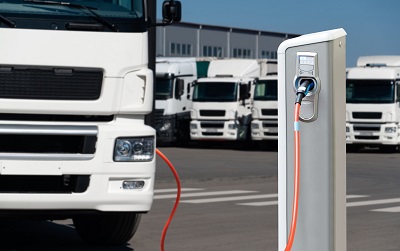
Installing vehicle charging points across Scotland at truck stops, fleet depots and ports can help road freight operators switch to all-electric fleets, writes Peter Brown.
This comes from research carried out by Heriot-Watt University, whose report Towards Zero Emission HGV Infrastructure in Scotland identifies a need for charging points for battery electric trucks both at fleet depots and along major freight routes including the A9, A90 and M74.
Hydrogen trucks installed with fuel cells would also need charging points along these routes.
Transport Scotland commissioned the report as part of its commitment to the HGV Decarbonisation Pathway for Scotland.
Professor Phil Greening is a logistics expert at Heriot-Watt University and director of The Centre for Sustainable Road Freight. He said: “Electric trucks are already on our roads and most short haul freight deliveries can already be completed without any extra charging stops.
“But for all current freight routes in Scotland to be completed, charging points for electric heavy goods vehicles need to be provided both at depots and along freight routes, particularly the most heavily used ones.”
Cabinet Secretary for Transport Fiona Hyslop said: “This signals to private charge point companies and electrical distribution network operators where focused investment can bring improvements for the areas that need it most.”
The report highlighted the A9 between Stirling and Inverness, the A90 between Perth and Aberdeen and the M74 between Glasgow and Carlisle as ‘critical corridors for freight’.
Hotspot locations for electric truck charging points included Dalwhinnie in the Scottish Highlands, Ballinluig in Perth and Kinross, Stracathro in Angus, Abington in South Lanarkshire and Annandale Water in Dumfries and Galloway.
The report said that where possible, charging points would be positioned at existing locations like truck stops, lorry parks, ports and transport hubs like container storage terminals, the report notes. Land in or next to these charger locations, for example ports, would also be needed to instal rapid chargers and provide space for HGVs to park and charge.
For more information, go to the Heriot-Watt University website.




